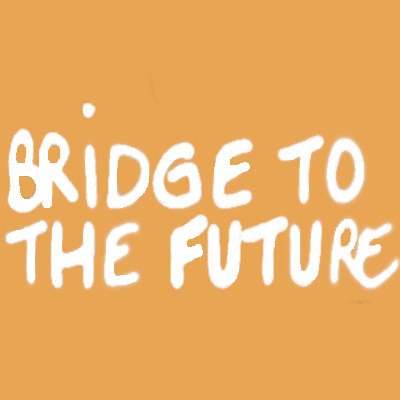About Bridge to the Future
With the disappearance of the Elders, oral heritage risks being lost, it is therefore fundamental that the younger generations have access to their oral heritage in order for the UN Declaration on the Rights of Indigenous Peoples to be applied in Indigenous communities.
By bringing together the First Indigenous delegates who participated in the 1977 and 1981 UN Conferences and using oral history methodology, the 2013 and 2015 Symposiums have made it possible to trace the history of this period of struggle. The participation of Indigenous youth, responsible for filming and recording the oral heritage materials found on this Platform, helped establish communication between the generations so that they can carry on the path that was forged in 1977.
Indeed, during the Symposiums, the Elders hoped to pass on a message to Indigenous youth, representing the next generation of Indigenous rights defenders: for them to continue the tradition of oral transmission to relate not only the experience of those who first came to the UN, but also the struggles of their local communities, thereby pursuing the goal of self-determination in accordance with the spirit and intent of the treaties.
With these objectives at the core, this project was launched to collect oral memory, involving follow-up by young people, who were charged with continuing the work of collecting the oral memory of Elders in their respective communities. Additionally, a more extensive research project was launched on the transmission of oral memory among Indigenous Peoples, as suggested by Article 27 of the Final Declaration of the Symposium and further developed during the May 17 side event at the Permanent Forum in New York.
The youth were trained in advance in the use of video so that they could themselves collect the memory of the Elders during the Symposium in Geneva and later in their communities. The empowerment of Indigenous Peoples, in particular women and young people, will thus be strengthened while other sectors of their respective countries will become aware of their rights and of the value of their respective cultures. An environment favorable to the implementation at the national and local levels of the United Nations Declaration on their rights will be created.
The "Bridge to the Future" Web Portal has been created by Docip (Indigenous Peoples' Center for Documentation, Research and Information) in collaboration with the youth participants involved in this project as a safe digital space to preserve the history of the International process of Indigenous Peoples as narrated by Elders and carried forward in a creative manner by Indigenous youth for future generations. This includes the transmission of oral culture expressed during Workshops in the field and at the United Nations in Geneva.
//
Acerca de Un Puente al Futuro
Con la desaparición de los Ancianos, el patrimonio oral corre el riesgo de perderse, por lo que es fundamental que las nuevas generaciones hagan lo necesario para que se pueda aplicar la Declaración de las Naciones Unidas sobre los Pueblos Indígenas en los diferentes países y comunidades. Los Simposios de 2013 y de 2015 reunían a aquellos primeros delagados Indígenas que participaron en las primeras Conferencias de 1977 y 1981 en la ONU, y el empleo de la metodología de la historia oral han permitido recordar ese periodo de lucha. La participación de jóvenes Indígenas, encargados de grabar y documentar el evento, ha permitido establecer una comunicación entre ambas generaciones para que pudieran seguir la senda abierta en 1977.
De esta manera, durante los simposios, los Ancianos han transmitido un mensaje a la juventud Indígena, es decir, la siguiente generación de defensores de los derechos Indígenas, para que esta perpetúe la tradición de la transmisión oral para relatar no solo la experiencia de aquellos y aquellas inicialmente que fueron los primeros en acudir a las Naciones Unidas, sino también las luchas de sus comunidades locales y poder cumplir así el objetivo de autodeterminación y de conformidad con el espíritu y objetivo de los tratados.
Se trata, por lo tanto, de un proyecto de documentación de la memoria oral que implica que los jóvenes continúen con el trabajo de registrar la memoria de los Ancianos de sus respectivas comunidades. Además, es inició un proyecto de investigación más exhaustivo sobre la transmisión de la memoria oral entre los Pueblos Indígenas, tal y como lo sugiere el artículo 27 de la Declaración Final del Simposio, concepto desarrollada en el evento paralelo del 17 de mayo durante el Foro Permanente en Nueva York.
Previamente, se instruyó a los jóvenes la utilización de aparatos de vídeo para que ellos mismos pudieran recoger la memoria de sus mayores durante el Simposio, en Ginebra, y posteriormente en sus propias comunidades. De esta manera, se reforzará el empoderamiento de los Pueblos Indígenas, specialmente de las mujeres y los jóvenes, y se sensibilizará a otros sectores de sus países en lo relativo a sus derechos y al valor intrínseco de sus culturas. También se establecerá un entorno favorable para la aplicación de la Declaración de las Naciones Unidas sobre los Derechos de los Pueblos Indígenas, tanto al nivel nacional como local.
El Portal Web ‘Un Puente al Futuro’ ha sido creado por el Docip (Centro de Documentación, Investigación e Información de los Pueblos Indígenas), en colaboración con los jóvenes participantes en este proyecto, como un espacio digital seguro para preservar la historia del proceso internacional de los Pueblos Indígenas, relatada por los Ancianos y difundida de una forma creativa por los jóvenes Indígenas para las generaciones futuras: la transmisión de la historia oralexpresada mediante talleres sobre el terreno.


